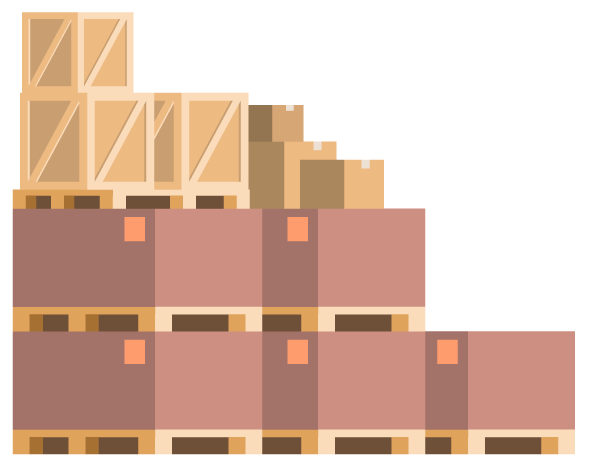Module 6 - Making it Happen
1. Commercialising your offering
A startup takes an idea and transforms it into a business. This chapter focuses on making sure that
your business has strong foundations from which your idea and proposition can thrive. Building strong foundations from the start will help you do things well along the way. It will make your business more resilient and prepared to manage challenging times effectively. We’ve split the chapter into 5 parts: commercialising your offering, approach to sales, managing cashflow and accounting, organisational management, and accelerators and incubators. A number of other topics such as stakeholder management and marketing are also part of making it happen but are covered in other chapters. It might not be the sexiest chapter in this manual but trust us, it’s an important one!

“Greatness is a lot of small things done well.”
– Ray Lewis
You have a great product or service idea, now you need to make it a reality. You need to get going, solve the problems of today whilst also having a view on tomorrow when demand will be significantly greater. Make sure you can make money from this whilst maintaining your values as a company. In this section, we explore key topics to think about like pricing and financial planning, capacity and expertise, supply chain, logistics and whether to outsource.
Having a plan to bring your product or service to market
The first thing you should work on when looking at how to commercialise your product or service is to develop a plan on how to bring it to market. An operational project plan that lays out different tasks that need to happen, timings for each of these and identifies who is responsible for them. There are several project management models and templates you can use for this depending on your personal preferences. If you haven’t used any before, have a look at Gantt charts and the Stage Gate Model. It’s important to consider what tasks you can do in parallel to save time. It’s also worth remembering that things often don’t go according to plan. People, suppliers and partners will let you down for one reason or another so always have a back-up plan steps to make sure your project keeps moving forward.
When building your plan, start with the end goal and work backwards. What do you need to do for your product or service to be available in a location or format that your consumer needs? Does this require transportation? How will you make the product or deliver the service? How long will this take? Will you do this or will someone else? What inputs are required? Does it require equipment? Where will you get inputs and equipment from? Note that food can be seasonal in its production and consumption. Some food has long lead times. For example, there is no other way to make a 15 year old whiskey than to wait
15 years. Make sure that your plan adequately reflects these realities.


Modelling your costs
A key part of commercialising your product or service is understanding the economics of bringing your proposition to market. To do this, you must understand what it costs you to produce a unit of your good or service. This is sometimes called a variable cost. Variable costs include direct costs but can also include wider costs such as equipment depreciation and shipping costs. Not included in variable costs are fixed costs. These are costs that you bear regardless of the amount that you sell – for example, marketing costs and general staff costs not associated
with production.
Your direct costs are all those that are directly attributable to the production of a specific good or service. These can also be referred to as cost of goods (COGs). The main components of these are direct material costs and direct labour costs. Calculating these costs are specific to your industry. For example, the costs borne by a farm will differ to those of a brand buying in a product. Finding industry specific guidance as well as local accounting practices will set you in the right direction.
- Inefficiencies and wastage: Make sure you factor in inefficiencies and wastage when determining your costs. Some losses are inevitable but will increase your direct costs as more materials and labour will be needed to compensate for these.
- Scale and volume: Things usually get cheaper with scale so consider how that applies for your product or service. Do minimum order quantities (MOQs) apply for some of your supplies? If you want branded packaging, for example, this often requires you to order thousands if not hundreds of thousands of units. Some processes also only start making sense at larger volumes, how will you manage that?

Before you start producing, you will have to rely on a cost model to estimate your direct costs.
However, once you start making and selling, you will be able to determine your true cost by tracking what you buy in (materials, labour, etc.) and how many units you are able to produce and sell. Knowing your true costs of goods will enable you to correctly determine your profit margin on each sale. The revenue you generate from the sale of a unit minus your costs of goods is your profit margin on the transaction.
Pricing strategies
Pricing is one of the most important decisions you’ll make for your business as your costs of goods will impact your decision on pricing. For example, if you price below your cost of goods, you won’t be in business for long. However, only thinking about your pricing relative to your cost of goods is also a mistake.
There are many pricing strategies that you can adopt. The one you choose will depend on many factors including: your type of product/service, the maturity of the market, consumers’ willingness to pay, and your marketing strategy. Some of the most common pricing strategies are:
- Cost-plus: adding a mark-up on top of your cost of goods to achieve your desired level of profit margin
- Competitive: setting prices based on competitor pricing
- Value based: pricing based on what your customer is willing to pay
- Price skimming: setting a high price initially and then lowering this as more competitors enter the market
- Penetration pricing: setting a low price to enter an established market

Within your pricing strategy, you may also want to include a promotion strategy. This is where you lower your pricing for certain periods of time in order to increase the volume of sales. This should be aligned with your marketing strategy.
Hire in expertise
You have the initial idea, but you might not be the person who can actually develop the product or put the service together on a larger commercial scale. Getting it right as early as possible is crucial to your business success. The cost of getting it wrong is huge and with limited startup resources, it makes sense to bring in expertise where you can. Even if you’re developing something that hasn’t been done before, there will be people who have some relevant experience to make the process easier. If you’re developing a food product, you may look for a food technologist or a university who can help you refine it. If you’re developing farming/manufacturing techniques, you may look for food scientists and agro-tech experts. Hiring their services may seem like a big investment at first but it will be money well spent. If you really can’t afford them initially, consider offering equity to incentivise them or positions as business advisors (more on this in Chapter 8 on building your team).
Supply chain
Your product/service will only be as strong as your supply chain. You need to find reliable and trustworthy suppliers you can build a good relationship with. Things to consider when scoping out suppliers include: are they financially robust? Do they take care of their people? Do they have good safety and quality assurance processes in places? Do they have the certifications/accreditations that your customers will require?
You may need to set up commercial agreements with them, we discuss this in the legal section (Chapter 4).

